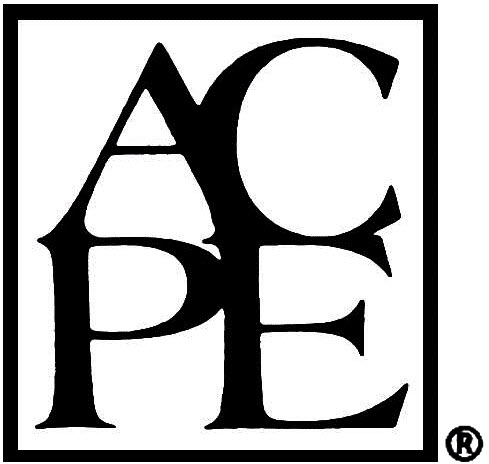Improving Cultural Competency in the Pharmacy Setting
Additional Topic Areas CE for Pharmacists
Are you a Pharmacy Tech? Check out the Pharmacy Tech version of this course.
Course Summary
Cultural competence in the pharmacy setting can help reduce discrimination and disparities in healthcare. Pharmacists and pharmacy staff can improve patient outcomes and satisfaction by raising the level of cultural competency in their daily practice. Success in this endeavor requires an understanding of what is meant by cultural competency, and the relationship between cultural competency and health disparity. Once these concepts are understood, strategies can be developed to address discrimination and health disparities in the pharmacy setting and to increase the cultural competence of pharmacists and pharmacy staff.
Define health disparities
Describe what is meant by cultural competency
Review patient characteristics such as gender, and sexual orientation and how these groups can experience health disparities
Identify tools to address discrimination and health disparities in the pharmacy setting
Course Syllabus
I. Introduction
II. Diversity in the United States
III. Cultural Diversity and Biases, Stereotypes, and Prejudices
IV. Cultural Diversity and Health Disparity
V. Defining Cultural Competence
VI. Groups who Experience Health Disparity
1. Race and Ethnicity
2. HIV/AIDS and Infectious Disease Status
3. Language: Limited English Proficiency (LEP)
4. LGBT and Gender Identity
VII. Assessing Cultural Competence
VIII. Barriers to Health Equity and How to Overcome Them
1. Communicating with Patients
2. Cultural Humility
3. Accommodate Patient Needs, and Preferences
4. Core Competencies for Pharmacy Staff
IX. Summary
- Read the course objectives and faculty planner disclosure
- Read the course material
- Complete the post-test with a minimum score of 70% and complete the course evaluation form.
- Results are automatically submitted to CPE Monitor
Faculty Planner Disclosure
The following individuals were involved in the development of this activity: Steve Malen, PharmD, MBA, and Susan DePasquale, MSN, PMHNP-BC. There are no financial relationships relevant to this activity to report or disclose by any of the individuals involved in the development of this activity.
Unlabeled Use Disclosures
The information provided in this course is general in nature and it is solely designed to provide participants with continuing education credit(s). This course and materials are not meant to substitute for the independent, professional judgment of any participant regarding that participant’s professional practice, including but not limited to patient assessment, diagnosis, treatment and/or health management. Medical and pharmacy practices, rules, and laws vary from state to state, and this course does not cover the laws of each state; therefore, participants must consult the laws of their state as they relate to their professional practice. Healthcare professionals, including pharmacists and pharmacy technicians, must consult with their employer, healthcare facility, hospital, or other organization, for guidelines, protocols, and procedures they are to follow. The information provided in this course does not replace those guidelines, protocols, and procedures but is for academic purposes only, and this course’s limited purpose is for the completion of continuing education credits. Participants are advised and acknowledge that information related to medications, their administration, dosing, contraindications, adverse reactions, interactions, warnings, precautions, or accepted uses are constantly changing, and any person taking this course understands that such person must make an independent review of medication information prior to any patient assessment, diagnosis, treatment and/or health management. Any discussion of off-label use of any medication, device, or procedure is informational only and such uses are not endorsed hereby. Nothing contained in this course represents the opinions, views, judgments, or conclusions of RxCe.com LLC. RxCe.com LLC is not liable or responsible to any person for any inaccuracy, error, or omission with respect to this course, or course material.
Computer Hardware/Software Requirements
Please ensure the device you plan to use meets these requirements and specifications:
- Operating System: Windows 7,8,10, or 11 /Mac OS X 10.9 or later/iOS/Android
- Supported Browsers: Microsoft Edge, Firefox, Google Chrome, Safari, Opera
- A connection to the internet
- For Live Webinars or Conferences: GoToWebinar application for iOS, Android, Mac, or PC. You cannot 'call into' a live conference.
Rating: 4.07/5
Based on the ratings of 2662 customers
- Target Audience: Pharmacist
- Secondary Audiences: This educational activity is also for other healthcare professionals, such as nurses, physicians, or others who may be part of a healthcare team and may be interested in this educational topic. A healthcare team approach to patient care may be discussed in this activity, as applicable. No state board or professional organization has evaluated this activity to determine whether it meets the continuing education requirements of nurses, physicians, or other professions not listed under the “Target Audience” described above. Always verify with individual employers or supervisors whether they will accept this educational activity upon completion.
- Contact Hours: 2.0 (0.2 CEUs)
- Activity Release Date: 1/28/2023}
- Activity Expiration Date: 1/28/2026}
- Activity Type: Knowledge
- UAN: 0669-0000-23-005-H99-P
- Topic: Additional Topic Areas
- CeBroker Number: 20-991170
Faculty:

RxCe.com, LLC is accredited by the Accreditation Council for Pharmacy Education as a provider of continuing pharmacy education.